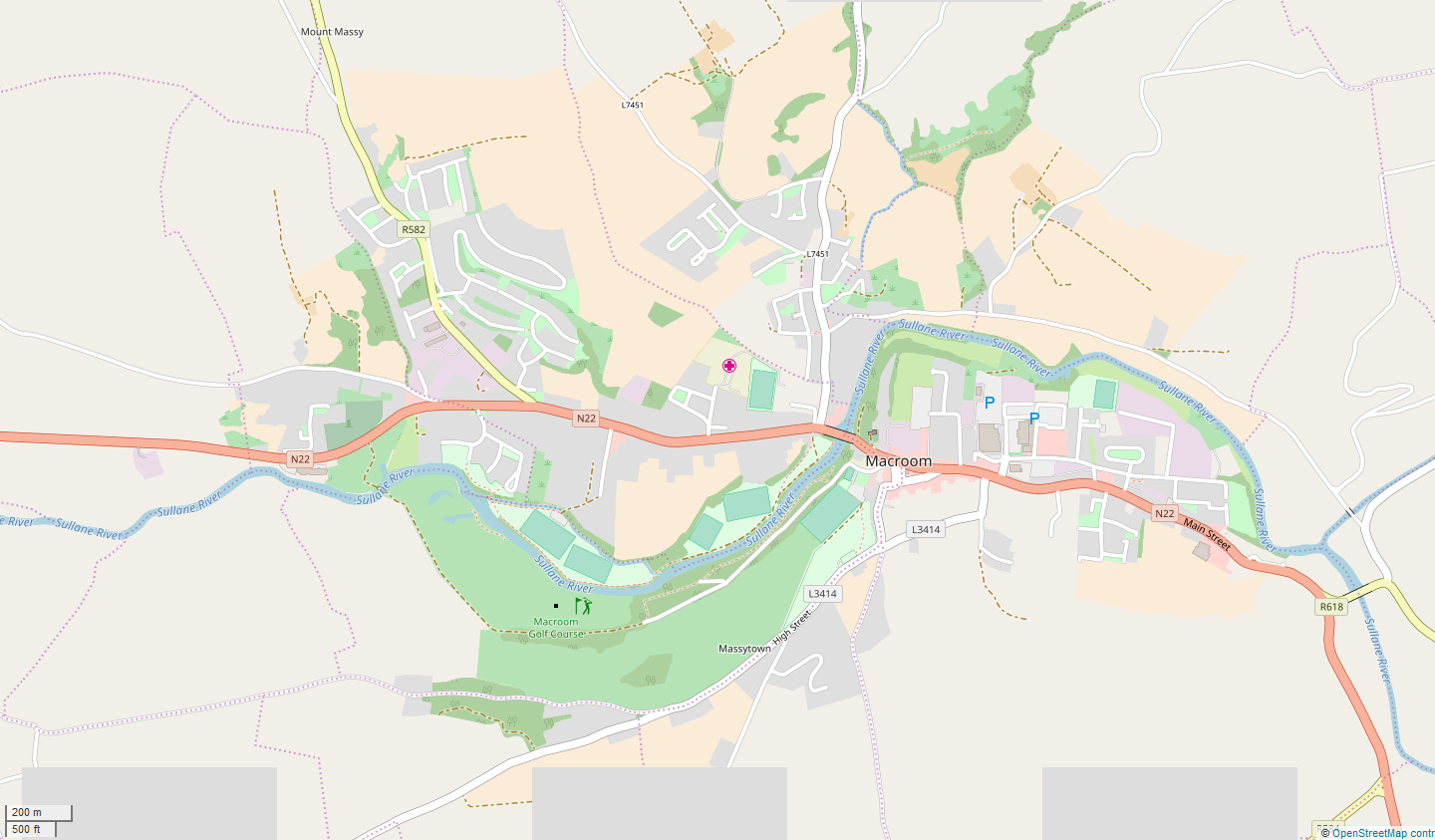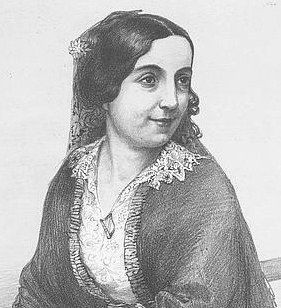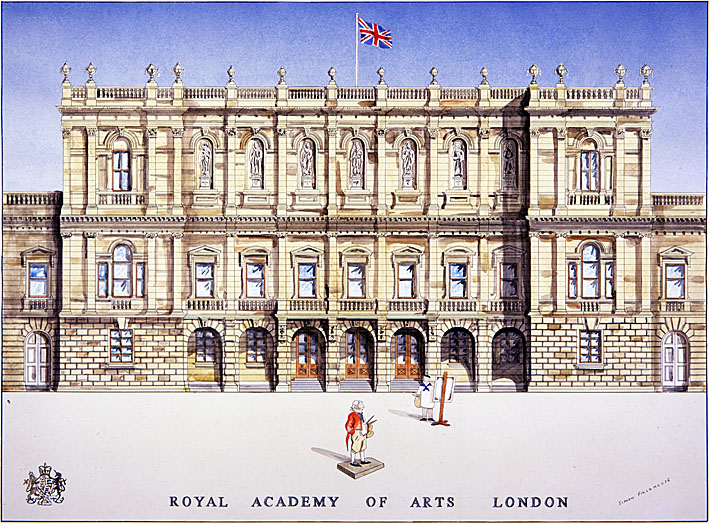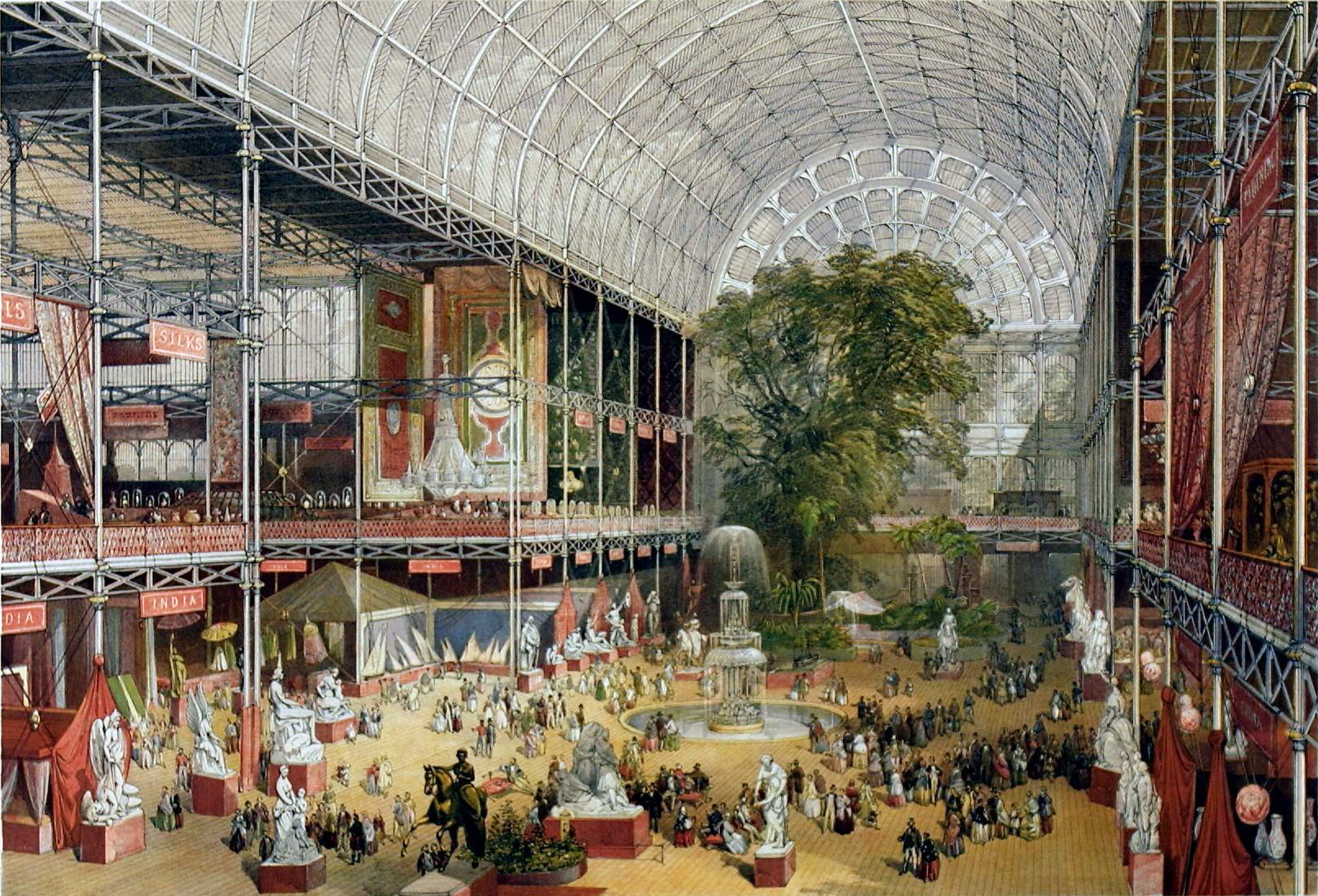|
Richard Barter (sculptor)
Richard Barter (circa 1824 – 5 January 1896) was an Irish sculptor. Life Richard Barter was born around 1824 in Macroom, County Cork. In 1844, around the age of 20, Barter entered the Royal Dublin Society's School. While still a student in 1847, he won a prize from the Irish Art Union for his statuette ''Venus and Cupid''. During this time, he became a friend of Daniel O'Connell. He moved to London for a few years, where he met and became life-long friends with John Henry Foley. He returned to Dublin briefly, but later moved back to County Cork, settling in St Ann's Hill, Blarney in 1853. He was also a musician, playing the flagolet. In 1851, he exhibited as part of the Great Exhibition in London. He produced primarily portrait busts and small subject groups. In 1845, 1847 and 1851 he exhibited with the Royal Hibernian Academy, primarily miniature busts in ivory. Between 1864 and 1874 he occasionally exhibited with the Royal Academy. Barter died at St Ann's on 5 January 189 ... [...More Info...] [...Related Items...] OR: [Wikipedia] [Google] [Baidu] |
Macroom
Macroom (; ga, Maigh Chromtha) is a market town in County Cork, Ireland, located in the valley of the River Sullane, halfway between Cork city and Killarney. Its population has grown and receded over the centuries as it went through periods of war, famine and workhouses, forced emigration and intermittent prosperity. The 2011 census gave an urban population of 3,879 people, while the 2016 census recorded 3,765 people. Macroom began as a meeting place for the druids of Munster. It is first mentioned is in 6th-century records, and the immediate area hosted a major battle involving the Irish king Brian Boru. During the middle ages, the town was invaded by a succession of warring clans, including the Murcheatach Uí Briain and Richard de Cogan families. In the early modern period the MacCarthy's took control and later the area found prosperity via milling. The MacCarthys built a series of tower houses, some of which survive. The family lost influence during the Williami ... [...More Info...] [...Related Items...] OR: [Wikipedia] [Google] [Baidu] |
Richard Barter (physician)
Richard Barter (1802 – 3 October 1870) was an Irish physician and proponent of hydropathy. He collaborated with David Urquhart on the introduction of Turkish baths into the United Kingdom. Barter founded St Ann's Hydro, Ireland's first hydropathic establishment at St Ann's Hill, located near Cork. Early life and family Richard barter was born in 1802 in Cooldaniel, County Cork. His parents were Richard and Elizabeth Barter (née Berkely). He had 6 siblings. Barter was trained at the College of Physicians in London, and became a members of the Royal College of Surgeons of England in 1828. He returned to Ireland to take up a position in Inniscarra, County Cork as a dispensary doctor. He married Mary Newman in 1836. She was the daughter John Newman of Dromore, County Cork. They had 4 daughters and 7 sons. Two of their sons, Richard and Ulick were knighted. He died on 3 October 1870 at Blarney. The ''Dictionary of Irish Architects'' assumes that Barter was the father of ... [...More Info...] [...Related Items...] OR: [Wikipedia] [Google] [Baidu] |
19th-century Male Artists
The 19th (nineteenth) century began on 1 January 1801 ( MDCCCI), and ended on 31 December 1900 ( MCM). The 19th century was the ninth century of the 2nd millennium. The 19th century was characterized by vast social upheaval. Slavery was abolished in much of Europe and the Americas. The First Industrial Revolution, though it began in the late 18th century, expanding beyond its British homeland for the first time during this century, particularly remaking the economies and societies of the Low Countries, the Rhineland, Northern Italy, and the Northeastern United States. A few decades later, the Second Industrial Revolution led to ever more massive urbanization and much higher levels of productivity, profit, and prosperity, a pattern that continued into the 20th century. The Islamic gunpowder empires fell into decline and European imperialism brought much of South Asia, Southeast Asia, and almost all of Africa under colonial rule. It was also marked by the collapse of the la ... [...More Info...] [...Related Items...] OR: [Wikipedia] [Google] [Baidu] |
Irish Male Sculptors
Irish may refer to: Common meanings * Someone or something of, from, or related to: ** Ireland, an island situated off the north-western coast of continental Europe ***Éire, Irish language name for the isle ** Northern Ireland, a constituent unit of the United Kingdom of Great Britain and Northern Ireland ** Republic of Ireland, a sovereign state * Irish language, a Celtic Goidelic language of the Indo-European language family spoken in Ireland * Irish people, people of Irish ethnicity, people born in Ireland and people who hold Irish citizenship Places * Irish Creek (Kansas), a stream in Kansas * Irish Creek (South Dakota), a stream in South Dakota * Irish Lake, Watonwan County, Minnesota * Irish Sea, the body of water which separates the islands of Ireland and Great Britain People * Irish (surname), a list of people * William Irish, pseudonym of American writer Cornell Woolrich (1903–1968) * Irish Bob Murphy, Irish-American boxer Edwin Lee Conarty (1922–1961) * Irish McCal ... [...More Info...] [...Related Items...] OR: [Wikipedia] [Google] [Baidu] |
19th-century Irish Sculptors
The 19th (nineteenth) century began on 1 January 1801 ( MDCCCI), and ended on 31 December 1900 ( MCM). The 19th century was the ninth century of the 2nd millennium. The 19th century was characterized by vast social upheaval. Slavery was abolished in much of Europe and the Americas. The First Industrial Revolution, though it began in the late 18th century, expanding beyond its British homeland for the first time during this century, particularly remaking the economies and societies of the Low Countries, the Rhineland, Northern Italy, and the Northeastern United States. A few decades later, the Second Industrial Revolution led to ever more massive urbanization and much higher levels of productivity, profit, and prosperity, a pattern that continued into the 20th century. The Islamic gunpowder empires fell into decline and European imperialism brought much of South Asia, Southeast Asia, and almost all of Africa under colonial rule. It was also marked by the collapse of ... [...More Info...] [...Related Items...] OR: [Wikipedia] [Google] [Baidu] |
Irish Sculptors
Irish may refer to: Common meanings * Someone or something of, from, or related to: ** Ireland, an island situated off the north-western coast of continental Europe ***Éire, Irish language name for the isle ** Northern Ireland, a constituent unit of the United Kingdom of Great Britain and Northern Ireland ** Republic of Ireland, a sovereign state * Irish language, a Celtic Goidelic language of the Indo-European language family spoken in Ireland * Irish people, people of Irish ethnicity, people born in Ireland and people who hold Irish citizenship Places * Irish Creek (Kansas), a stream in Kansas * Irish Creek (South Dakota), a stream in South Dakota * Irish Lake, Watonwan County, Minnesota * Irish Sea, the body of water which separates the islands of Ireland and Great Britain People * Irish (surname), a list of people * William Irish, pseudonym of American writer Cornell Woolrich (1903–1968) * Irish Bob Murphy, Irish-American boxer Edwin Lee Conarty (1922–1961) * Irish McCal ... [...More Info...] [...Related Items...] OR: [Wikipedia] [Google] [Baidu] |
Charles Stewart Parnell
Charles Stewart Parnell (27 June 1846 – 6 October 1891) was an Irish nationalist politician who served as a Member of Parliament (MP) from 1875 to 1891, also acting as Leader of the Home Rule League from 1880 to 1882 and then Leader of the Irish Parliamentary Party from 1882 to 1891. His party held the balance of power in the House of Commons during the Home Rule debates of 1885–1886. Born into a powerful Anglo-Irish Protestant landowning family in County Wicklow, he was a land reform agitator and founder of the Irish National Land League in 1879. He became leader of the Home Rule League, operating independently of the Liberal Party, winning great influence by his balancing of constitutional, radical, and economic issues, and by his skillful use of parliamentary procedure. He was imprisoned in Kilmainham Gaol, Dublin, in 1882, but he was released when he renounced violent extra-Parliamentary action. The same year, he reformed the Home Rule League as the Irish Parli ... [...More Info...] [...Related Items...] OR: [Wikipedia] [Google] [Baidu] |
Catherine Hayes (soprano)
Catherine Hayes, married name Catherine Bushnell, (1818? – 11 August 1861) was a world-famous Irish soprano of the Victorian era. According to London's '' Daily Express'', "Hayes was the ' Madonna' of her day; she was the 19th-century operatic equivalent of the world's most famous pop star." Biography Youth in Limerick and education in Dublin and Paris (1818–1845) Hayes was baptised on 8 November 1818, in St Mary's Cathedral, Limerick. She was born of humble Anglo-Irish parentage at 4 Patrick Street, Limerick. Her father was the musician Arthur Williamson Hayes; abandoned the family in 1823, and Catherine Hayes, aged 5, grew up very poor with her mother, Mary Carroll, and sister. Mary Carroll and Arthur Williamson Hayes were married on 18 January 1815, in St Michael's Church, Limerick. They had four children, Henrietta, Charles, Catherine, and William, who were all baptised in St Mary's Cathedral, Limerick. In 1838, her vocal talents attracted the notice of Edmund Knox, th ... [...More Info...] [...Related Items...] OR: [Wikipedia] [Google] [Baidu] |
Royal Academy Of Arts
The Royal Academy of Arts (RA) is an art institution based in Burlington House on Piccadilly in London. Founded in 1768, it has a unique position as an independent, privately funded institution led by eminent artists and architects. Its purpose is to promote the creation, enjoyment and appreciation of the visual arts through exhibitions, education and debate. History The origin of the Royal Academy of Arts lies in an attempt in 1755 by members of the Society for the Encouragement of Arts, Manufactures and Commerce, principally the sculptor Henry Cheere, to found an autonomous academy of arts. Prior to this a number of artists were members of the Society for the Encouragement of Arts, Manufactures and Commerce, including Cheere and William Hogarth, or were involved in small-scale private art academies, such as the St Martin's Lane Academy. Although Cheere's attempt failed, the eventual charter, called an 'Instrument', used to establish the Royal Academy of Arts over a dec ... [...More Info...] [...Related Items...] OR: [Wikipedia] [Google] [Baidu] |
Royal Dublin Society
The Royal Dublin Society (RDS) ( ga, Cumann Ríoga Bhaile Átha Cliath) is an Irish philanthropic organisation and members club which was founded as the 'Dublin Society' on 25 June 1731 with the aim to see Ireland thrive culturally and economically. The RDS is synonymous with its 160,000 m2 campus in Ballsbridge, Dublin, Ireland. The premises include the ' RDS Arena', 'RDS Simmonscourt', 'RDS Main Hall' and other venues which are used regularly for exhibitions, concerts and sporting events like the Dublin Horse Show or as playground for the Leinster Rugby team. The Royal Dublin Society was granted Royal Patronage in 1820 by George IV. The RDS Members' Club is a members-only club offering exclusive access to sports events on its premises and weekly luncheons and dinners. The RDS is one of nine organisations in Ireland that may nominate candidates for the Seanad Éireann (Irish Upper House) elections. Name and history The society was founded by members of the Dublin Philos ... [...More Info...] [...Related Items...] OR: [Wikipedia] [Google] [Baidu] |
Royal Hibernian Academy
The Royal Hibernian Academy (RHA) is an artist-based and artist-oriented institution in Ireland, founded in Dublin in 1823. Like many other Irish institutions, such as the RIA, the academy retained the word "Royal" after most of Ireland became independent as the Irish Free State in December 1922. History The RHA was founded as the result of 30 Irish artists petitioning the government for a charter of incorporation. According to the letters patent of 5 August 1823, The Royal Hibernian Academy of Painting, Sculpture, and Architecture was established, which included a National School of Art. The first elected president was the landscape painter, William Ashford. In 1824 architect Francis Johnston was made president. He had provided headquarters for the RHA at Academy House in Lower Abbey Street at his own expense. The first exhibitions took place in May 1825 and were held annually from then on. To encourage interest in the arts works displayed at the RHA were distributed by lot a ... [...More Info...] [...Related Items...] OR: [Wikipedia] [Google] [Baidu] |
Great Exhibition
The Great Exhibition of the Works of Industry of All Nations, also known as the Great Exhibition or the Crystal Palace Exhibition (in reference to the temporary structure in which it was held), was an international exhibition which took place in Hyde Park, London, from 1 May to 15 October, 1851. It was the first in a series of World's Fairs, exhibitions of culture and industry that became popular in the 19th century. The event was organised by Henry Cole and Prince Albert, husband of Victoria, Queen of the United Kingdom. Famous people of the time attended the Great Exhibition, including Charles Darwin, Karl Marx, Michael Faraday (who assisted with the planning and judging of exhibits), Samuel Colt, members of the Orléanist Royal Family and the writers Charlotte Brontë, Charles Dickens, Lewis Carroll, George Eliot, Alfred Tennyson and William Makepeace Thackeray. The opening music, under the superintendence of William Sterndale Bennett, was directed by Sir ... [...More Info...] [...Related Items...] OR: [Wikipedia] [Google] [Baidu] |



_Irish_Frankenstein.jpg)



